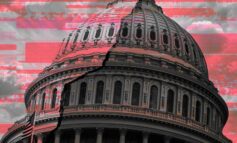The first wave of Arab revolutions is entering its second
phase. Along with dismantling the structures of political despotism, they have
embarked on the arduous journey toward genuine change and democratization.
On the opposite side, the U.S. is seeking to recover from
the initial state of disarray and confusion generated by its loss of key
allies, and to define a roadmap for the new age of Arab revolutions. It had
been thrust aside by a roaring Arab street that struck a deadly blow to its
doctrine of stability. After watching the pitch helplessly, it is now
determined to force its way back in to dictate its course and outcome. Finally,
Washington has come to swallow the bitter fact that the world has changed, and
that its old friends and partners are no more. What had been a challenge to its
power and authority is now “an historic opportunity,” as Obama put it in his speech last
week.
Yet this is not an opportunity for the people who have risen
up, but for the force that has aided and abetted their jailers, and ensured
they were kept in shackles for decades in the name of political realism. It is
its “opportunity,” the chance for its decision makers and bureaucrats
sitting in their Washington boardrooms to fashion the region’s present and
future, just as they did its past. In Obama’s words, “to pursue the world
as it should be” — not according to the yearnings and aspirations of its
people — but to America’s cold calculations.
And how is this new world to be built? The guiding model is
to be found in Eastern Europe and the color revolutions. In short, by using
American soft power and public diplomacy to reshape the socio-political scene
in the region, the aim is to transform the people’s revolutions into America’s
revolutions.
The center of gravity has shifted from the streets — with
their uncontrollable, unpredictable, and dangerous rhythm — to the hands of the
powerful elites. So, back we are to the old game of engineered elites: docile,
domesticated, at the service of U.S. strategies (consciously and
sub-consciously).
But, this is being stretched to new fronts: the strategy is
not only confined to the classical friends left over from the old era, but to
also contain new forces produced by the revolution, which had long been
marginalized and rejected by the U.S.
“We must… broaden our engagement… so that we reach
the people who will shape the future — particularly young people… [and]
provide assistance to civil society, including those that may not be officially
sanctioned,” said President Obama. To this end the U.S. has doubled its
fund aimed at “protecting civil society groups,” raising its budget from $1.5m to
$3.4m.
The targets are not only the usual neoliberal elements, but
include the activists who spearheaded the protest movements, and mainstream
Islamists. For example, the last few months have seen an escalation of American
public diplomacy efforts in Egypt and Tunisia by the U.S. government and
institutions close to it. This has included programs aimed at Arab youth
leaders such as the Leaders for Arab Democracy program sponsored by the Middle
East Partnership Initiative, as well as many conferences and seminars such as
the one hosted by the Project on Middle East Democracy at the Woodrow Wilson
Center in Washington last month.
A number of Arab activists were invited to the Project,
including prominent Egyptian democracy and human rights activist Esraa Abdel
Fattah. Meetings have also been held between high ranking U.S. officials and
the Muslim Brotherhood last month in Cairo, while Ennahda’s deputy chairman has
recently returned from a visit to Washington to “discuss democratic
transition in Tunisia.”
Washington hopes that these rising forces may be stripped of
their ideological opposition to American hegemony and turned into pragmatists
fully integrated into the existing U.S.-led international order. Dogma is not a
problem, as long as they agree to operate within parameters delineated for
them, if they play the game without questioning its rules.
Economic containment
But containment and integration are not only political but
economic, too. They are to be pursued through free markets and trade
partnerships in the name of economic reform. Plans “to stabilize and
modernize” the Tunisian and Egyptian economies were announced at this
week’s G8 summit. These include a $40bn dollar aid package that would drown
these economies deeper in debt, a two million dollar facility to support
private investment “modeled on funds that supported the transitions in
Eastern Europe after the fall of the Berlin Wall,” the “Deauville Partnership”
to expand political and economic ties with North Africa and the Middle East,
and an extension of the mandate of the European Bank for Reconstruction and
Development to cover the nations of the southern Mediterranean. As usual,
investment and aid are conditional on adoption of the American neoliberal
economic model in the name of reform and modernization, and on further binding
economies to U.S. and European markets under the banner of “trade
integration.”
One wonders what would be left of the Arab revolutions
amidst infiltrated civil societies, domesticated political parties, and
dependent economies. That is precisely the post-revolution Middle East being
concocted by the White House today, carved up with the chisel of the economy,
money, and public diplomacy — not to mention its firepower and military bases
scattered across the region and at its borders.
The Obama administration may succeed in infiltrating Arab
organizations, but its bid to reproduce the Eastern European scenario in the
region is little more than wishful thinking. While Prague and Warsaw looked to
the U.S. for inspiration in its liberation struggle, Cairo, Tunis, and Sana’a
see the U.S. as the problem and chief impediment to their emancipation and
progress. To Arabs, the U.S. is a force of occupation draped in a thin cloak of
democracy and human rights.
No one could have offered stronger evidence of such a view
than Obama himself. He began his Middle East speech with eulogies to freedom
and the equality of all men, and ended it with talk of the “Jewishness of
Israel.” Effectively, Israel
has been denying the citizenship rights of 20 per cent of its Arab inhabitants
and right of return of six million Palestinian refugees.
In vain, the U.S. tries to reconcile the irreconcilable and
preach democracy, while occupying and aiding in occupation. But in a region
that forms one interconnected geographic, cultural, and political sphere, you
cannot liberate Egyptians, Syrians, or Tunisians, without liberating
Palestinians.
Soumaya Ghannoushi is a freelance writer specializing in the
history of European Perceptions of Islam. Her work has appeared in a number of
leading British papers including the Guardian and the Independent. Reprinted
from Al Jazeera.





Leave a Reply